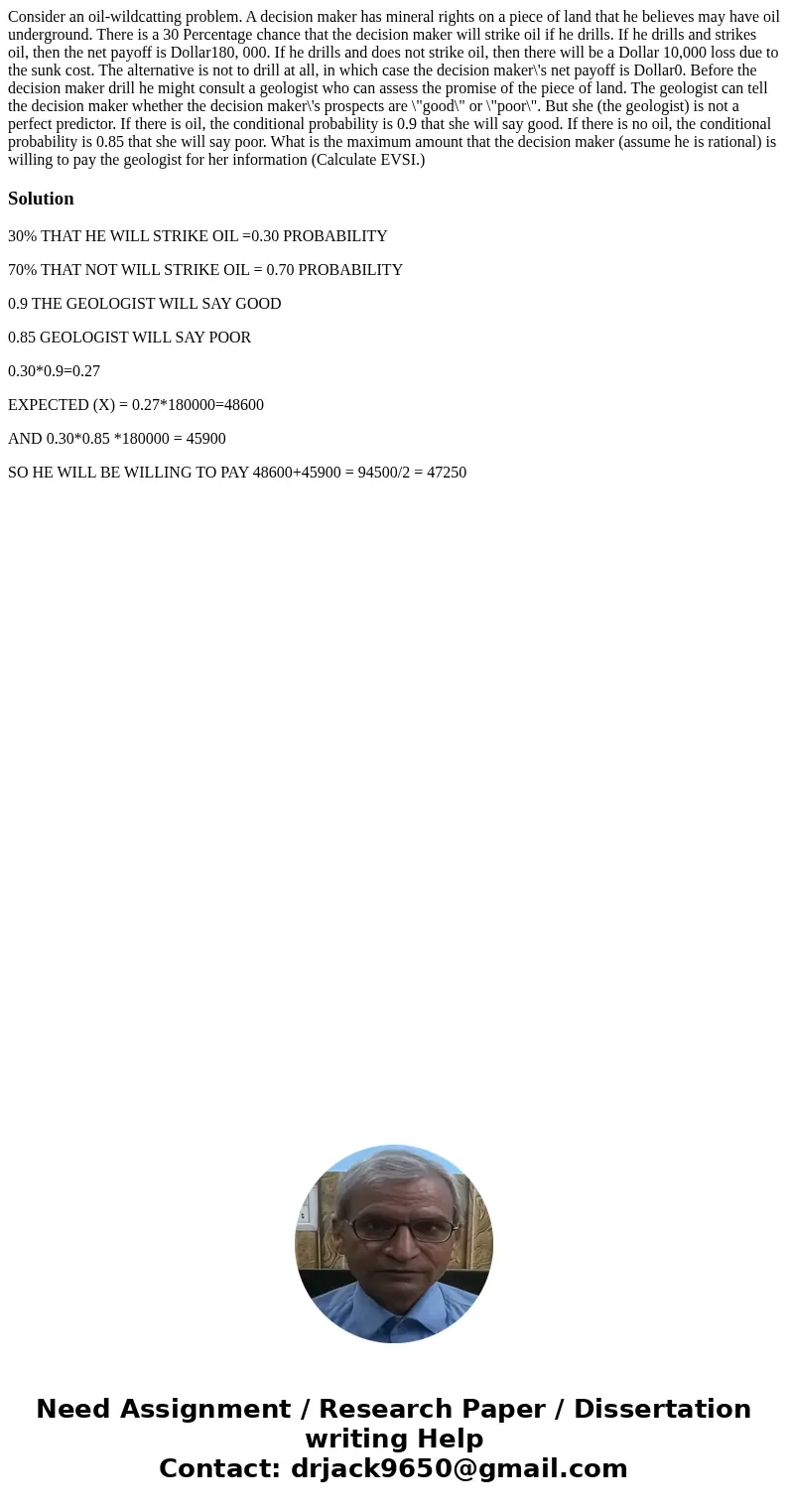Consider an oilwildcatting problem A decision maker has mine
Consider an oil-wildcatting problem. A decision maker has mineral rights on a piece of land that he believes may have oil underground. There is a 30 Percentage chance that the decision maker will strike oil if he drills. If he drills and strikes oil, then the net payoff is Dollar180, 000. If he drills and does not strike oil, then there will be a Dollar 10,000 loss due to the sunk cost. The alternative is not to drill at all, in which case the decision maker\'s net payoff is Dollar0. Before the decision maker drill he might consult a geologist who can assess the promise of the piece of land. The geologist can tell the decision maker whether the decision maker\'s prospects are \"good\" or \"poor\". But she (the geologist) is not a perfect predictor. If there is oil, the conditional probability is 0.9 that she will say good. If there is no oil, the conditional probability is 0.85 that she will say poor. What is the maximum amount that the decision maker (assume he is rational) is willing to pay the geologist for her information (Calculate EVSI.) 
Solution
30% THAT HE WILL STRIKE OIL =0.30 PROBABILITY
70% THAT NOT WILL STRIKE OIL = 0.70 PROBABILITY
0.9 THE GEOLOGIST WILL SAY GOOD
0.85 GEOLOGIST WILL SAY POOR
0.30*0.9=0.27
EXPECTED (X) = 0.27*180000=48600
AND 0.30*0.85 *180000 = 45900
SO HE WILL BE WILLING TO PAY 48600+45900 = 94500/2 = 47250

 Homework Sourse
Homework Sourse